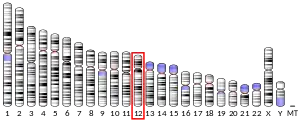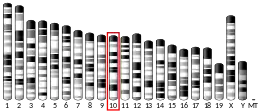| SLC25A3 | |||||||||||||||||||||||||||||||||||||||||||||||||||
|---|---|---|---|---|---|---|---|---|---|---|---|---|---|---|---|---|---|---|---|---|---|---|---|---|---|---|---|---|---|---|---|---|---|---|---|---|---|---|---|---|---|---|---|---|---|---|---|---|---|---|---|
| Identifiers | |||||||||||||||||||||||||||||||||||||||||||||||||||
| Aliases | SLC25A3, PHC, PTP, OK/SW-cl.48, solute carrier family 25 member 3 | ||||||||||||||||||||||||||||||||||||||||||||||||||
| External IDs | OMIM: 600370 MGI: 1353498 HomoloGene: 37649 GeneCards: SLC25A3 | ||||||||||||||||||||||||||||||||||||||||||||||||||
| |||||||||||||||||||||||||||||||||||||||||||||||||||
| |||||||||||||||||||||||||||||||||||||||||||||||||||
| |||||||||||||||||||||||||||||||||||||||||||||||||||
| |||||||||||||||||||||||||||||||||||||||||||||||||||
| |||||||||||||||||||||||||||||||||||||||||||||||||||
| Wikidata | |||||||||||||||||||||||||||||||||||||||||||||||||||
| |||||||||||||||||||||||||||||||||||||||||||||||||||
Phosphate carrier protein, mitochondrial is a protein that in humans is encoded by the SLC25A3 gene.[5][6] The encoded protein is a transmembrane protein located in the mitochondrial inner membrane and catalyzes the transport of phosphate ions across it for the purpose of oxidative phosphorylation.[7][8] There are two significant isoforms of this gene expressed in human cells, which differ slightly in structure and function.[9] Mutations in this gene can cause mitochondrial phosphate carrier deficiency (MPCD), a fatal disorder of oxidative phosphorylation symptomized by lactic acidosis, neonatal hypotonia, hypertrophic cardiomyopathy, and death within the first year of life.[7][8]
Structure
The SLC25A3 gene is located on the q arm of chromosome 12 in position 23.1 and spans 8,376 base pairs.[6] The gene has 9 exons and produces a 40.1 kDa protein composed of 362 amino acids.[10][11][9] The encoded protein (PHC) is a multi-pass transmembrane protein located in the mitochondrial inner membrane; it contains six transmembrane segments, emerging into a large extramembranous loop.[7][8][12] Both the N-terminal and C-terminal regions of this protein protrude toward the cytosol. PHC contains three related segments arranged in tandem which are related to those found in other characterized members of the mitochondrial carrier family.[6] There exist two transcript variants of this protein, PHC-A and PHC-B, which differ by 13 amino acids.[12] Isoform A contains 42 amino acids while Isoform B contains 41. In vitro, the isoforms differ in their substrate affinities and transport rates.[13][9]
Function
The encoded protein (PHC) catalyzes the transport of phosphate from the cytosol into the mitochondrial matrix, either by proton cotransport or in exchange for hydroxyl ions.[6] In the final steps of oxidative phosphorylation, this protein catalyzes the uptake of a phosphate ion with a proton across the mitochondrial inner membrane.[9] The availability of inorganic phosphate for oxidative phosphorylation is mainly dependent on PHC activity.[13] To substantially affect oxidative phosphorylation, PHC depletion must be severe, exceeding 85%.[14] This protein may be involved in regulation of the mitochondrial permeability transition pore (mPTP).[7][8]
Clinical significance
Mutations in this gene can cause mitochondrial phosphate carrier deficiency (MPCD), a fatal disorder of oxidative phosphorylation. Symptoms include lactic acidosis, hypertrophic cardiomyopathy, and neonatal hypotonia; afflicted patients die within the first year of life.[7][8]
Isoform A of this gene is expressed at high levels in heart, pancreatic, and skeletal muscle cells while Isoform B is expressed in all tissues, albeit poorly.[13][9]
In the sole recorded case of a mutation in this gene, a homozygous mutation (c.215G>A) in the alternatively spliced exon 3A of this gene caused an amino acid replacement (G72E) in Isoform A. This leads to ATP synthase deficiency in muscle cells, which express Isoform A, but not in fibroblasts, which express Isoform B, causing MPCD and the aforementioned standard symptoms.[15][9]
Interactions
The encoded protein interacts with PPIF; this interaction is impaired by CsA.[7][8]
See also
References
- 1 2 3 GRCh38: Ensembl release 89: ENSG00000075415 - Ensembl, May 2017
- 1 2 3 GRCm38: Ensembl release 89: ENSMUSG00000061904 - Ensembl, May 2017
- ↑ "Human PubMed Reference:". National Center for Biotechnology Information, U.S. National Library of Medicine.
- ↑ "Mouse PubMed Reference:". National Center for Biotechnology Information, U.S. National Library of Medicine.
- ↑ Jabs EW, Thomas PJ, Bernstein M, Coss C, Ferreira GC, Pedersen PL (May 1994). "Chromosomal localization of genes required for the terminal steps of oxidative metabolism: alpha and gamma subunits of ATP synthase and the phosphate carrier". Human Genetics. 93 (5): 600–2. doi:10.1007/bf00202832. PMID 8168843. S2CID 39597611.
- 1 2 3 4 "Entrez Gene: SLC25A3 solute carrier family 25 (mitochondrial carrier; phosphate carrier), member 3".
 This article incorporates text from this source, which is in the public domain.
This article incorporates text from this source, which is in the public domain. - 1 2 3 4 5 6 "SLC25A3 - Phosphate carrier protein, mitochondrial precursor - Homo sapiens (Human) - SLC25A46 gene & protein". www.uniprot.org. Retrieved 2018-08-20.
 This article incorporates text available under the CC BY 4.0 license.
This article incorporates text available under the CC BY 4.0 license. - 1 2 3 4 5 6 "UniProt: the universal protein knowledgebase". Nucleic Acids Research. 45 (D1): D158–D169. January 2017. doi:10.1093/nar/gkw1099. PMC 5210571. PMID 27899622.
- 1 2 3 4 5 6 Online Mendelian Inheritance in Man (OMIM): SLC25A3 - 600370
- ↑ Zong NC, Li H, Li H, Lam MP, Jimenez RC, Kim CS, Deng N, Kim AK, Choi JH, Zelaya I, Liem D, Meyer D, Odeberg J, Fang C, Lu HJ, Xu T, Weiss J, Duan H, Uhlen M, Yates JR, Apweiler R, Ge J, Hermjakob H, Ping P (October 2013). "Integration of cardiac proteome biology and medicine by a specialized knowledgebase". Circulation Research. 113 (9): 1043–53. doi:10.1161/CIRCRESAHA.113.301151. PMC 4076475. PMID 23965338.
- ↑ "SLC25A3 - Phosphate carrier protein, mitochondrial". Cardiac Organellar Protein Atlas Knowledgebase (COPaKB).
- 1 2 Dolce V, Iacobazzi V, Palmieri F, Walker JE (April 1994). "The sequences of human and bovine genes of the phosphate carrier from mitochondria contain evidence of alternatively spliced forms". The Journal of Biological Chemistry. 269 (14): 10451–60. doi:10.1016/S0021-9258(17)34081-4. PMID 8144629.
- 1 2 3 Huizing M, Ruitenbeek W, van den Heuvel LP, Dolce V, Iacobazzi V, Smeitink JA, Palmieri F, Trijbels JM (June 1998). "Human mitochondrial transmembrane metabolite carriers: tissue distribution and its implication for mitochondrial disorders". Journal of Bioenergetics and Biomembranes. 30 (3): 277–84. doi:10.1023/A:1020501021222. PMID 9733094. S2CID 45811751.
- ↑ Seifert EL, Gál A, Acoba MG, Li Q, Anderson-Pullinger L, Golenár T, Moffat C, Sondheimer N, Claypool SM, Hajnóczky G (December 2016). "Natural and Induced Mitochondrial Phosphate Carrier Loss: DIFFERENTIAL DEPENDENCE OF MITOCHONDRIAL METABOLISM AND DYNAMICS AND CELL SURVIVAL ON THE EXTENT OF DEPLETION". The Journal of Biological Chemistry. 291 (50): 26126–26137. doi:10.1074/jbc.M116.744714. PMC 5207081. PMID 27780865.
- ↑ Mayr JA, Merkel O, Kohlwein SD, Gebhardt BR, Böhles H, Fötschl U, Koch J, Jaksch M, Lochmüller H, Horváth R, Freisinger P, Sperl W (March 2007). "Mitochondrial phosphate-carrier deficiency: a novel disorder of oxidative phosphorylation". American Journal of Human Genetics. 80 (3): 478–84. doi:10.1086/511788. PMC 1821108. PMID 17273968.
Further reading
- Dolce V, Fiermonte G, Messina A, Palmieri F (1992). "Nucleotide sequence of a human heart cDNA encoding the mitochondrial phosphate carrier". DNA Sequence. 2 (2): 133–5. doi:10.3109/10425179109039683. PMID 1777677.
- Maruyama K, Sugano S (January 1994). "Oligo-capping: a simple method to replace the cap structure of eukaryotic mRNAs with oligoribonucleotides". Gene. 138 (1–2): 171–4. doi:10.1016/0378-1119(94)90802-8. PMID 8125298.
- Dolce V, Iacobazzi V, Palmieri F, Walker JE (April 1994). "The sequences of human and bovine genes of the phosphate carrier from mitochondria contain evidence of alternatively spliced forms". The Journal of Biological Chemistry. 269 (14): 10451–60. doi:10.1016/S0021-9258(17)34081-4. PMID 8144629.
- Marsh S, Carter NP, Dolce V, Iacobazzi V, Palmieri F (October 1995). "Chromosomal localization of the mitochondrial phosphate carrier gene PHC to 12q23". Genomics. 29 (3): 814–5. doi:10.1006/geno.1995.9924. PMID 8575787.
- Suzuki Y, Yoshitomo-Nakagawa K, Maruyama K, Suyama A, Sugano S (October 1997). "Construction and characterization of a full length-enriched and a 5'-end-enriched cDNA library". Gene. 200 (1–2): 149–56. doi:10.1016/S0378-1119(97)00411-3. PMID 9373149.
- Huizing M, Ruitenbeek W, van den Heuvel LP, Dolce V, Iacobazzi V, Smeitink JA, Palmieri F, Trijbels JM (June 1998). "Human mitochondrial transmembrane metabolite carriers: tissue distribution and its implication for mitochondrial disorders". Journal of Bioenergetics and Biomembranes. 30 (3): 277–84. doi:10.1023/A:1020501021222. PMID 9733094. S2CID 45811751.
- Bouwmeester T, Bauch A, Ruffner H, Angrand PO, Bergamini G, Croughton K, Cruciat C, Eberhard D, Gagneur J, Ghidelli S, Hopf C, Huhse B, Mangano R, Michon AM, Schirle M, Schlegl J, Schwab M, Stein MA, Bauer A, Casari G, Drewes G, Gavin AC, Jackson DB, Joberty G, Neubauer G, Rick J, Kuster B, Superti-Furga G (February 2004). "A physical and functional map of the human TNF-alpha/NF-kappa B signal transduction pathway". Nature Cell Biology. 6 (2): 97–105. doi:10.1038/ncb1086. PMID 14743216. S2CID 11683986.
- Jin J, Smith FD, Stark C, Wells CD, Fawcett JP, Kulkarni S, Metalnikov P, O'Donnell P, Taylor P, Taylor L, Zougman A, Woodgett JR, Langeberg LK, Scott JD, Pawson T (August 2004). "Proteomic, functional, and domain-based analysis of in vivo 14-3-3 binding proteins involved in cytoskeletal regulation and cellular organization". Current Biology. 14 (16): 1436–50. doi:10.1016/j.cub.2004.07.051. PMID 15324660.
- Iacobazzi V, Infantino V, Costanzo P, Izzo P, Palmieri F (November 2005). "Functional analysis of the promoter of the mitochondrial phosphate carrier human gene: identification of activator and repressor elements and their transcription factors". The Biochemical Journal. 391 (Pt 3): 613–21. doi:10.1042/BJ20050776. PMC 1276962. PMID 15984930.
- Otsuki T, Ota T, Nishikawa T, Hayashi K, Suzuki Y, Yamamoto J, Wakamatsu A, Kimura K, Sakamoto K, Hatano N, Kawai Y, Ishii S, Saito K, Kojima S, Sugiyama T, Ono T, Okano K, Yoshikawa Y, Aotsuka S, Sasaki N, Hattori A, Okumura K, Nagai K, Sugano S, Isogai T (2007). "Signal sequence and keyword trap in silico for selection of full-length human cDNAs encoding secretion or membrane proteins from oligo-capped cDNA libraries". DNA Research. 12 (2): 117–26. doi:10.1093/dnares/12.2.117. PMID 16303743.
- Mayr JA, Merkel O, Kohlwein SD, Gebhardt BR, Böhles H, Fötschl U, Koch J, Jaksch M, Lochmüller H, Horváth R, Freisinger P, Sperl W (March 2007). "Mitochondrial phosphate-carrier deficiency: a novel disorder of oxidative phosphorylation". American Journal of Human Genetics. 80 (3): 478–84. doi:10.1086/511788. PMC 1821108. PMID 17273968.
This article incorporates text from the United States National Library of Medicine, which is in the public domain.



